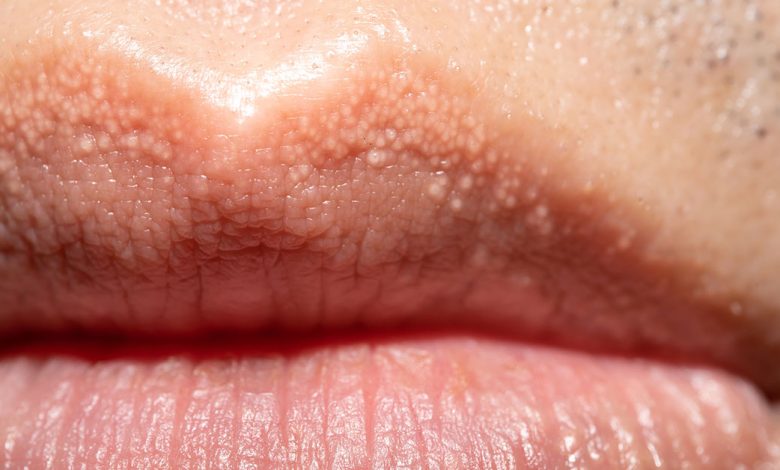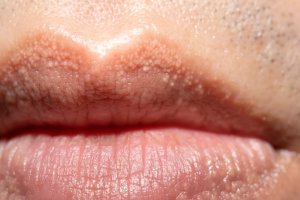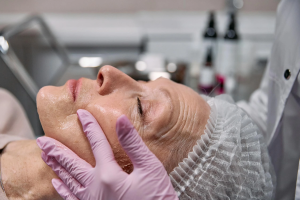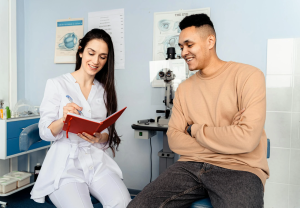What Are Those White Bumps That Can Appear On Your Private Parts and What Causes Them?

It’s natural to be curious and concerned about changes in your body, especially when they appear in sensitive areas. Many people find themselves wondering about those tiny, white or yellowish bumps that can show up on their lips or genitals. These are often Fordyce spots, a common and completely harmless skin feature that can cause unnecessary worry if misunderstood. Let’s delve into what these spots are, what they aren’t, and why understanding them can bring peace of mind.
Clearing Up Misconceptions: What Fordyce Spots Are Not

It’s crucial to begin by addressing some common misconceptions. These spots are not related to poor hygiene, infections, or sexually transmitted diseases (STDs). They are not warts, herpes, pimples, or blocked pores. As the American Osteopathic College of Dermatology points out, Fordyce spots are considered a “normal anatomical variant,” not a medical problem. This means they are a natural occurrence, not a sign of any illness.
Trying to treat Fordyce spots like acne or blemishes can lead to skin irritation and scarring. Squeezing or picking at them is strongly discouraged. Remember, they are not contagious, so you cannot “catch” them or spread them to others. Many individuals mistake them for something more serious due to their location and appearance, but they do not spread or worsen like infections or other skin conditions. In most cases, dermatologists do not recommend treatment unless the individual is significantly bothered by their appearance.
Understanding the Reality: What Fordyce Spots Are

So, if they’re not a medical issue, what are they? Fordyce spots are simply visible sebaceous glands, or oil glands, that appear on hairless areas of the skin. They are most commonly found on the edges of the lips, the inside of the cheeks, and the genitals. Everyone has these glands, but usually, they are hidden beneath hair follicles. In areas without hair, these glands can become visible, appearing as small, pale bumps.
Named after dermatologist John Addison Fordyce, who first described them in 1896, these spots are quite common. According to Healthline, approximately 70 to 80 percent of adults have them. They are a natural part of the body and are typically only noticed upon close inspection. Essentially, they are a visible version of something everyone has beneath their skin.
The Origins: Why People Have Fordyce Spots

You don’t “get” Fordyce spots in the same way you acquire a rash or infection. In fact, you are born with them. They often become more noticeable during puberty due to hormonal changes and increased oil production. As the sebaceous glands grow, they can push closer to the skin’s surface, making the spots visible.
Hormones and genetics may influence how prominent these spots become. If your parents had visible Fordyce spots, you are more likely to have them too. Unlike many skin conditions, they are not linked to lifestyle, diet, or hygiene. They are a normal part of your skin’s development, and some people simply have more visible ones than others.
The Natural Course: Do Fordyce Spots Go Away?

In most cases, Fordyce spots do not disappear entirely. However, they may become less noticeable over time. Hormonal changes, skin type, and age can all affect their visibility. Some people find that their spots fade or shrink as they get older, while others may notice them more during hormonal shifts like puberty or pregnancy.
According to the Mayo Clinic, these spots are harmless and do not require medical treatment. If you notice changes in color, size, or texture, consulting a doctor is advisable. Generally, they remain stable and do not develop into anything serious. Attempting to remove them without professional help can cause irritation or skin damage. Most of the time, they do not need any intervention.
Treatment Considerations: Should You Treat Fordyce Spots?

Since Fordyce spots pose no health risks, most doctors recommend leaving them alone. However, some individuals feel self-conscious about their appearance, especially if the spots are on visible areas like the lips. If you are considering treatment, options may include laser therapy, micro-punch surgery, or topical creams.
These procedures are primarily cosmetic, and results can vary. As WebMD notes, treatment is not guaranteed to be permanent, and the spots may return even after fading. There is also a risk of side effects such as scarring or discoloration with certain procedures. Due to the benign nature of the condition, many dermatologists discourage treatment unless it is for personal comfort. Any treatment should be discussed with a skin specialist who can explain the risks and benefits based on your individual needs.
Seeking Professional Advice: When to See a Doctor

While Fordyce spots are harmless, it’s always appropriate to consult a doctor if you have concerns. If you notice changes in the bumps, such as itching, pain, or sudden growth, have them checked out. Some conditions, like genital warts or cysts, can resemble Fordyce spots, so it’s best to rule them out.
A dermatologist can confirm if you are dealing with Fordyce spots. As the Cleveland Clinic states, dermatologists are trained to recognize these spots and can provide a diagnosis. Do not feel awkward about discussing this issue. These types of questions are common, and professionals are there to help you obtain clear answers. Confirming that nothing serious is occurring can be reassuring, especially if you are feeling uncertain.
Embracing Normalcy: Fordyce Spots Are Normal

Fordyce spots are a natural part of many people’s skin. They are not painful, contagious, or indicative of any health problems. Everyone has minor variations in their skin, and Fordyce spots are simply one of them. They do not interfere with health and do not require fixing.
Understanding what Fordyce spots are can alleviate unnecessary stress and worry. They are not a flaw or a medical issue, but a natural bodily occurrence. If you are ever unsure, a visit to a dermatologist can provide confirmation. In most cases, no treatment is necessary. Learning to live with Fordyce spots does not require special care, and understanding their nature can help you stop worrying about them. Openly discussing skin topics like this can foster greater comfort with our bodies and reduce unnecessary anxiety about minor changes.




